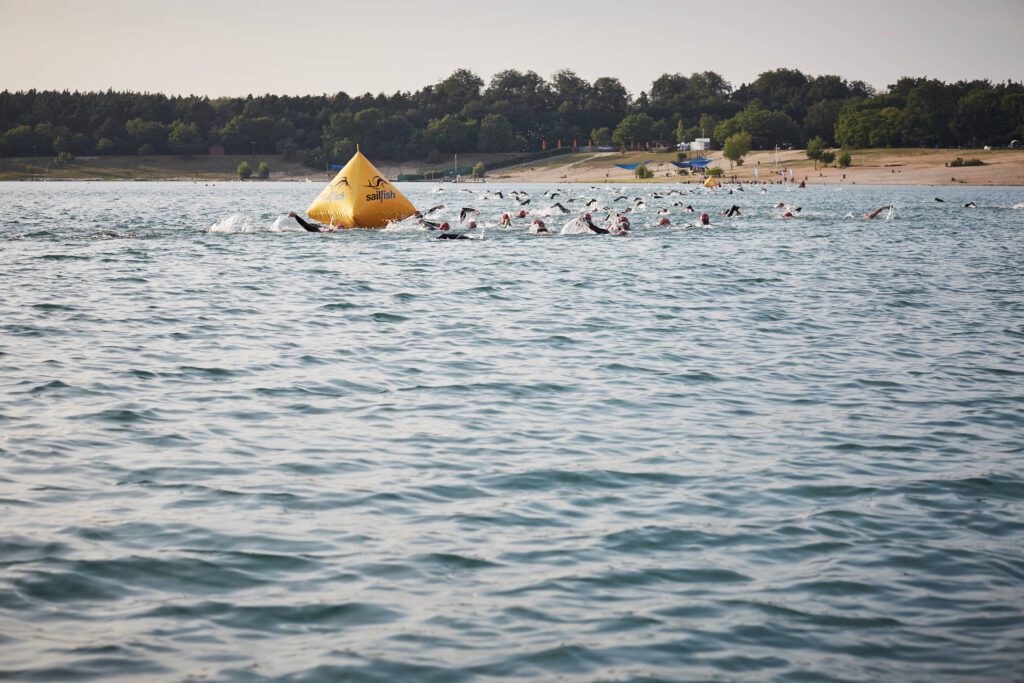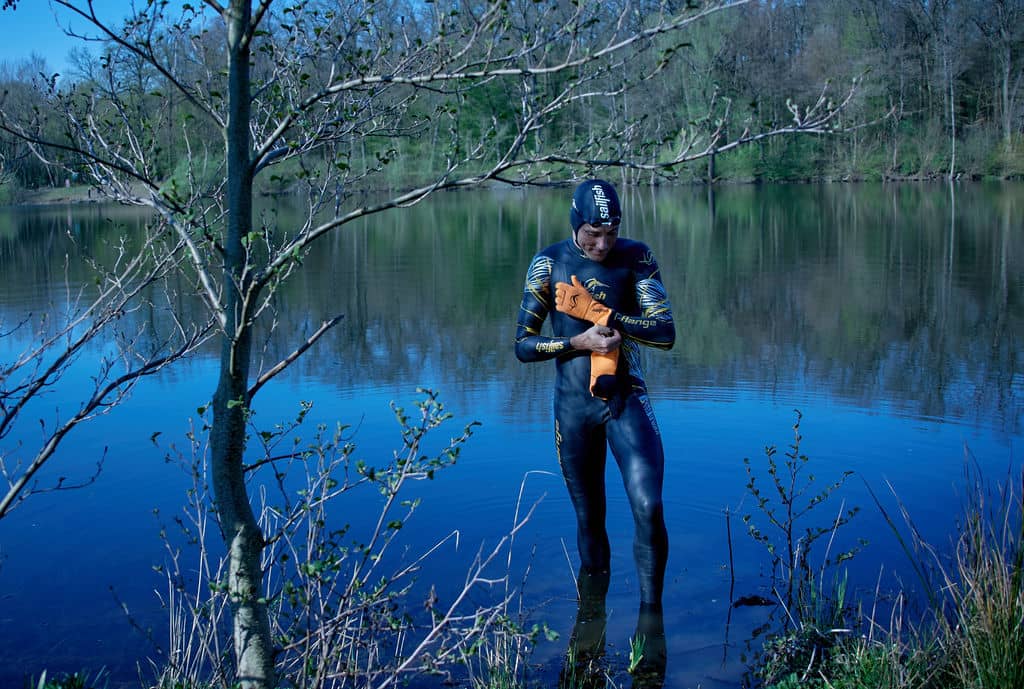KickAss Tec
The jump into the cool water!
KickAss Partner • 17. March 2021 • 4 Min.
The first signs of spring are showing and the long days of indoor training are soon over. When it comes to swimming, there are unfortunately only limited alternatives as long as swimming pools are still closed and private pools in the garden are rather the exception. For beginners, as well as experienced triathletes, swimming in open water can be a challenge in itself. But what makes open water swimming so special? What are the important differences and what needs to be considered?
To ensure that your first jump into the open water does not become a leap into the unknown, we have compiled some tips and tricks for open water swimming.
Preparation is essential
In the sea or lake, the water is often choppy, waves come from the side, hit the swimmer in the face and make it difficult to breathe. Here it is advisable to take your time and practise breathing on both sides so that it gradually feels natural.
In addition to your breathing technique, orientation plays an important role. Side walls in the pool make orientation easier, in open water it is completely different: There is no line, the water is dark, maybe wavy and you cannot see the bottom. Therefore, it is important to look for reference points that help you find your way straight ahead without losing a lot of time. In competitions there are usually buoys, if none are available, you should look for landmarks on the shore (buildings, church tower, lighthouse, mountain top, etc.). To know where the landmarks are, you have to lift your head and look ahead. The difficulty is that the optimal water position must be left for every third / fifth move and the kick must be stronger so that one does not lose too much speed. This is a technique that should definitely be included in your training.
Excursus: Orientation in open water:
Take a good look at the water before the competition. Try to find helpful landmarks that will help you find your way. These could be tall buildings, bridges or prominent trees on the shore.
1. When lining up your arm, try to push yourself slightly upwards out of the water. This will make it easier for you to lift your head and get a good view.
2. When lifting the head, increase the leg kick to maintain the water position and speed.
3. Look forward 2-3 times in succession. Use the first look to locate the buoy or landmark. Finally, correct or confirm your direction with the second look.
4. In stronger waves, you must adjust your orientation to the rhythm of the waves. Always try to lift your head at the top of the wave. This way you can spot buoys that would otherwise disappear in the trough of the wave.
5. In choppy water, you should lift your head much higher to get a good overview of the course. In return, however, try to minimise the number of glances. Lateral landmarks or other swimmers will help you maintain your direction.
6. Do not breathe while looking ahead for orientation. First look forward briefly and then turn your head directly to the side to breathe.
7. Be sure to practise orientation in training. For example, you can swim behind a club mate who keeps changing direction. This way you are forced to orientate yourself more often. After a while, switch roles.

Becoming familiar with the environment
The next important factor is the environment. Weather conditions (sun, wind, rain), smooth or wavy water, water temperature (cold/warm water) and water type (crystal clear or dark) can all affect open water training. The body works harder to stay warm, rough seas or strong winds make it difficult to see the landmarks. In this case, try to stay calm, use the swell to your advantage and swim with the waves instead of against them.
It is obvious that the performance from the pool cannot be directly transferred to open water training. If you have the opportunity to train in open water, it is advisable to do so often and regularly. It is perfect training and helps to keep a cool head in difficult situations.
Excursus: Preparations on the shore – before going into the water
1. Have a towel / warm coat and warm clothes ready.
2. Warm yourself up! Jog a few steps back and forth along the shore, do jumping jacks and let your arms circle. This will make it a little easier for your body to deal with the “cold water shock”.
3. Play it safe! Take a swimming partner, someone who can watch from the shore or at least a swimming buoy for better visibility. If problems arise, it is important that someone is there to help you out of the water.
4. Do not dive or jump into the water! The cold water can be like a shock to your body, go slowly into the water to allow your body to get used to the temperature.
5. Only swim with the right equipment!
But what is the right equipment? To protect your body and to keep the warmth in your body and extremities, you should definitely wear a wetsuit, a neoprene swimming cap or at least two swimming caps on top of each other. Neoprene gloves and neoprene swimming socks also protect the body from the cold. Earplugs can help protect the ears and reduce disorientation, swimming goggles or mask to reduce the painful feeling on the forehead.
We recommend a maximum duration of 20-25 minutes if the water temperature is below 15 degrees. But here too, the motto is: Everybody and every immune system is different and it is not expedient to risk your own health or life out of false ambition!


